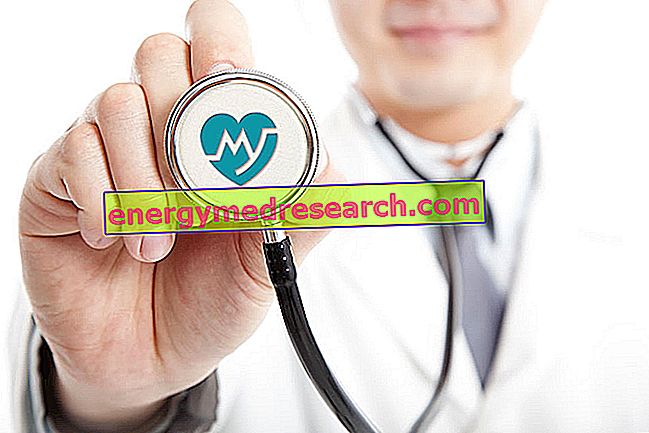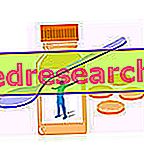A common complaint

It is thought that the so-called "cycle" breast pain depends on the marked hormonal variation typical of the premenstrual period: the breast tissue is in fact extremely delicate and sensitive to the hormonal fluctuations that occur every month.
Breast pain related to the menstrual cycle does not hide any pathological disorder and, although often annoying and debilitating, it should not cause any concern.
Incidence
According to some statistics, it seems that in 2 out of 3 cases, breast pain is closely related to the premenstrual period.
Breast cycle pain tends to occur mainly in women between the ages of 20 and 30, but is also common during the pre-menopausal period. Despite what has been said, there are exceptions: in fact, even some very young (14-15 years) experience the same symptoms near menstruation.
Clearly, women who have crossed the border of menopause cannot be affected by the so-called cycle breast pain: when it occurs after menopause, mastodynia therefore has causes of a different nature.
Symptoms
In the long list of symptoms characteristic of premenstrual syndrome, breast pain is undoubtedly one of the most annoying and debilitating. Generally, a few days before the onset of menstruation, mastodynia becomes so heavy that even the simple and delicate touch of the t-shirt on the breasts can turn into a real torture.
The typical breast pain associated with the menstrual cycle generally affects both breasts; usually, the discomfort is perceived in the upper part of the breast, to radiate progressively towards the inner part of the arm. Among the various symptoms that characterize this form of mastodynia, we cannot forget the enlargement of the breast, sometimes accompanied by the formation of some smaller, more solid masses (nodules) on the breast tissue. When it comes to cycle breast pain, these small nodules tend to dissolve in the days immediately following menstruation.
Breast pain can be worsened by some movements: many women report an increase in pain by practicing jogging, during sexual activity, lifting bulky boxes or simply hugging another person.
When to worry
It is good to distinguish the classic breast pain associated with the premenstrual period from a potentially pathological mastodynia. Every woman should learn to know her own body and to interpret the signs and symptoms she sends her correctly: for this reason, the doctor should instruct the woman in a periodic self-diagnosis, which consists of self-examination of the breast and careful observation of the breasts regarding shape, appearance, skin color and nipple size. In this way the patient can recognize any anomalies early, subjecting them to the specialist's control for a specific diagnosis.
Breast cycle pain should not lead to unnecessary alarm when
- regresses after menstruation
- the shape of the breast is natural
- the nipples are not retracted and do not secrete milky substances.
The appointment with the doctor is instead recommended when:
- Breast pain is localized at a precise point and is not relieved by common analgesics
- Breast pain worsens with time and does not regress after the end of menstruation
- Mastodynia interferes with normal daily activities
- The breast is nodular and the anomalous and solid masses do not "melt" after the menstrual flow
- Breast pain lasts more than 15 days in a month
To avoid alarmism, we briefly recall that - in contrast to widespread popular beliefs - in the case of breast cancer, breast pain is a rather rare onset symptom: in general, in fact, breast cancer does not begin with specific symptoms such as mastodynia .
drugs
Fortunately, cyclical breast pain tends to resolve spontaneously in a fairly short time, without the need to resort to drugs or alternative treatments: in fact, few women are taking analgesic medicines to control cycle pain in the breast.
However, when the pain becomes difficult to bear, the most indicated drugs are the common analgesics (ibuprofen and paracetamol) to be taken by mouth. There are also some medicaments to be applied directly to the breast: active ingredients such as diclofenac and ibuprofen are in fact also available in the form of topical gel or ointments.
Did you know that ...
Some therapies may worsen breast-cycle pain: for example, some drugs for the treatment of hypertension and certain antidepressants tend to aggravate breast tenderness. Obviously, it is difficult to interrupt or modulate the therapy without first consulting the doctor's opinion.
In some cases, women need more potent drugs than common NSAIDs to calm a particularly painful cycle of breast pain; after carrying out all the possible analyzes of the case, the doctor can prescribe to the patient drugs capable of blocking the action of hormones (responsible for breast pain) at the level of the membrane receptors. For this purpose, the recommended medicines are danazol * and bromocriptine *: however, these drugs often generate unpleasant side effects, sometimes much more disabling than cycle-related breast pain.
* Danazol: is a derivative of androgenic hormones, capable of inhibiting ovulation by reducing the level of estrogen and progesterone in the blood. As a result, breast cycle pain tends to not recur.
* Bromocriptine: it is a drug widely used for the treatment of hyperprolactinemia. Relieves cycle breast pain by reducing blood prolactin levels.
Remedies and advice
Some natural tips and certain small tricks can help women to better control cycle pain without resorting to medication:
- Support the breast by wearing a support bra. It is advisable to prefer cotton brassiere, without lace and without underwire. During sports, it is recommended to use a suitable and restraining bra in elastic fiber.
- Hot breast packs: udder pain can sometimes be mitigated by performing hot compresses directly on the chest.
- Following relaxation courses (eg yoga, pilates) can sometimes benefit the psyche, with positive repercussions also on the body.
- Limit the intake of exciting beverages (eg coffee, cola) and chocolate, which can be accused of accentuating breast pain.
- If necessary, follow a low-calorie diet.
- Vitamin E supplementation: although not scientifically proven, it seems that a tocopherol supplementation (dosage: max. 400 IU, up to 3 times a day) can significantly improve the typical symptoms of premenstrual syndrome, including breast pain. If no improvement is noted 3 months after starting treatment, it is advisable to stop taking it.
- Evening primrose oil: an ancient folk remedy, among other things lacking any proven scientific foundation, plans to supplement the diet with a supplementation of evening primrose oil capsules to be taken at a dose of 1 gram, up to 3 times a day. This plant substance - rich in gamma-linolenic acid, oleic acid and palmitic acid - appears to be a valid aid in the treatment of breast pain from the cycle.
- Integration of omega 3: particularly useful in case of poor fish and fishery products, it helps to rebalance the composition of cell membranes by reducing the body's predisposition to chronic inflammatory states, of which pain - including breast pain - can be a characteristic symptom.



